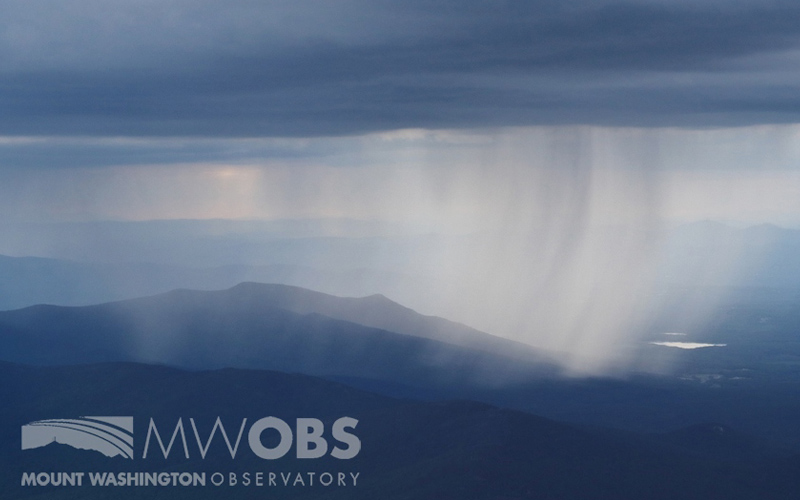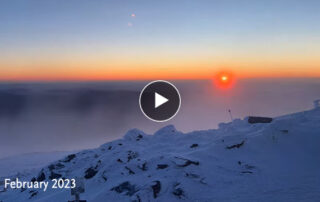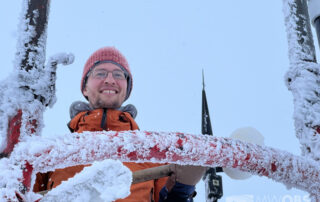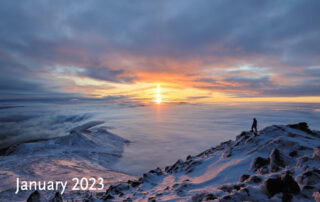Citizen Science Puts Weather Reporting in Your Hands

Ryan Knapp, Weather Observer & Meteorologist
February Newsletter: A Storm for the Record Books
This Feb. 4 sunrise time lapse was captured not long after our weather observers measured an actual temperature of -47° F, matching the Observatory's record low set in 1934, despite wind chill values approaching -110°F. View video. Dear Member, The beginning of February was one for the record
Brutal Cold on Mount Washington: A Weather Story
Brutal Cold on Mount Washington: A Weather Story Hello! My name is Karl Philippoff and I am a new weather observer at Mount Washington Observatory. Although I am from New Jersey, I have been up on the summit multiple times – once as a tourist, once
January Newsletter: Welcome to 2023 from Atop the Rockpile
Weather Observer Hayden Pearson views the sunset above the sea of clouds on Jan. 14. A larger version of this image by Meteorologist Ryan Knapp can be viewed here. Dear Member, Welcome to 2023! Here at the Observatory we’re excited to start the New Year on the
Fifteen Years of Observing Mount Washington’s Weather
Fifteen Years of Observing Mount Washington's Weather 2021-03-08 20:17:38.000 - Ryan Knapp, Observer/Staff Meteorologist Just over fifteen years ago (December 28, 2005), I started working at the Mount Washington Observatory. I started as an
Behind the Scientist
Behind the Scientist 2021-02-22 12:07:42.000 - Nicole Tallman, Weather Observer/Education Specialist Through outreach programs and talking to family and friends I realize there is a stigma behind being a scientist, that we are solely
On the Etymology of Cloud Names
On the Etymology of Cloud Names 2021-02-16 07:16:46.000 - Nate Iannuccillo, Weather Observer/Education Specialist This past weekend we got to observe an abundance of high clouds in the sky, with a thin layer of




